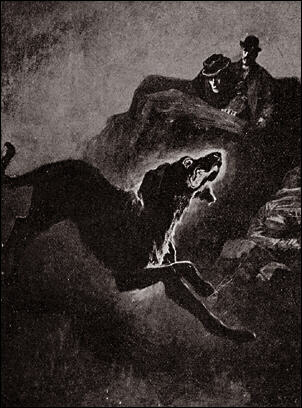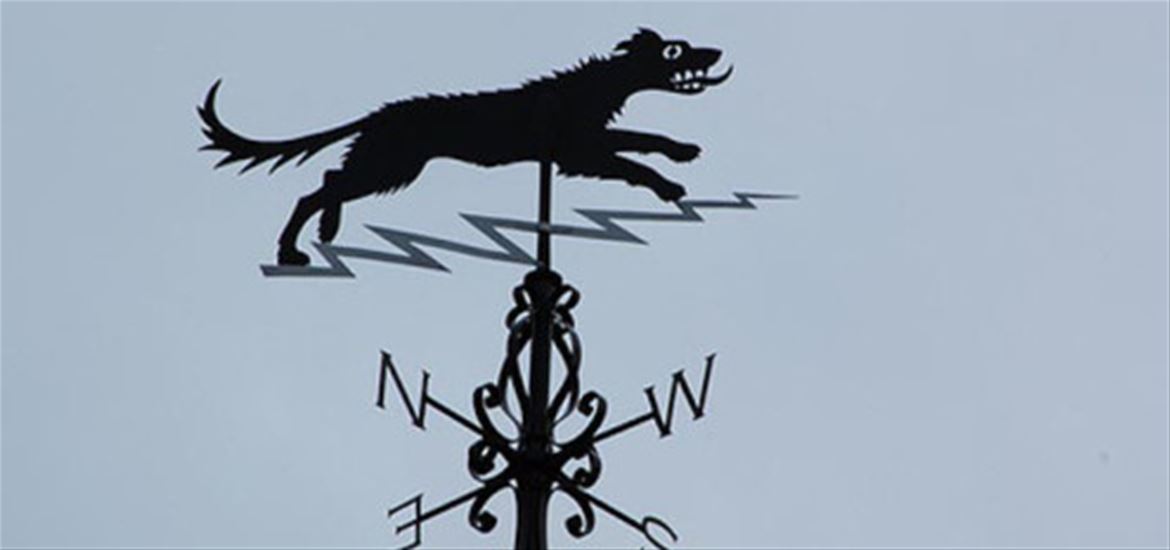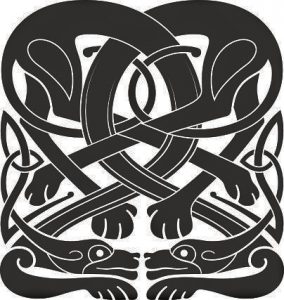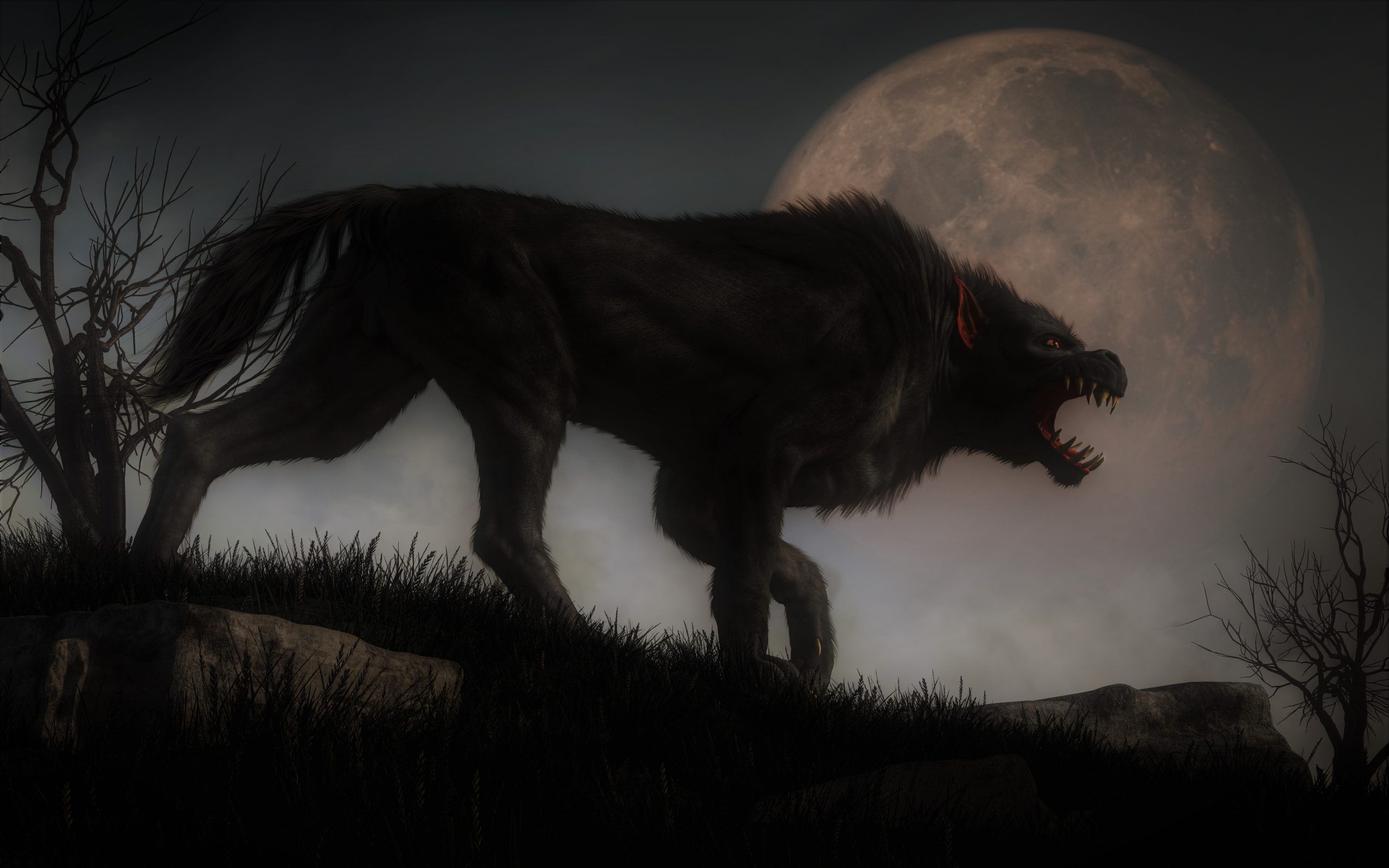The Black Dog is a supernatural or demonic spirit said to haunt mainland Britain. It takes the form of a black hound bigger than a calf, with glowing red eyes. It has many names, depending on the region in which it is found: the Barghest, Black Shuck, Padfoot and Shriker.

The Black Dog is said to travel along ancient pathways and ley lines. It is usually said to be malevolent, attacking hapless travellers in wild places. Occasionally it has a protective role, however, pursuing those guilty of crimes but defending the innocent.
The Black Dog of Bungay
The Black Dog is often associated with fire or electricity. A report from 1577 relates that on Sunday 4th March, during a thunderstorm, a Black Dog appeared in the parish church of Bungay in Suffolk where local people were worshipping. Lit by flashes of fire, the Dog ran about the church, killing two people and causing another man to ‘shrivel up like a piece of leather’. Shortly afterwards, the Black Dog appeared seven miles away inside Blythburgh church, reducing three people to ashes and leaving scorch marks on the church door.
The phenomenon has since been explained as a rare form of ball lightning. The strange events are still commemorated today by a weather vane depicting a Black Dog and a bolt of lightning in Bungay Market.
***
Origins of the Black Dog legend
Accounts of the Black Dog seem to have existed for thousands of years. Their original source is not clear, but a possible origin is the ancient Celtic legend of the Hounds of Arawn, king of the Underworld and god of the dead. Like many Celtic deities, Arawn was an ambiguous figure, sometimes seen as dark and monstrous, but at other times as the beautiful youth Gwyn ap Nudd, god of light and of the Celtic paradise. Arawn is accompanied by a pack of hounds, the Cwn Annwn, which on wild winter nights lead the Wild Hunt through stormy skies, herding damned souls into hell. The Cwn Annwn are sometimes depicted as black, but sometimes as bone-white with red ears.
***
The Black Dog of Newgate
Perhaps the most terrible Black Dog is the one that is said to haunt Amen Court in the City of London. Amen Court was the site of the infamous Newgate Prison, known for its appalling living conditions. In the time of Henry III, during a terrible famine, a man known as Schollar was imprisoned for sorcery. Before he could be tried and possibly condemned to burning at the stake, he was murdered and his flesh eaten by some of his starving fellow prisoners who declared that he was ‘good meat’. However, Schollar returned in the form of a ghostly Black Dog, and hunted down and killed his murderers. The Dog continued to haunt Newgate Prison for centuries afterwards, its appearance heralded by the sound of dreadful screams and the smell of rotting meat. It was especially likely to appear the night before an execution. After the prison was demolished in 1904, the Dog continued to haunt the area, and is now said to appear in Amen Court near St Paul’s Cathedral.
A former Newgate prisoner, Luke Hutton, published an account of the legend – “The Discovery of a London Monster, called, The Blacke Dogg of New-gate” – in 1638. Hutton claimed that the Black Dog of Newgate caused madness, despair and suicidality in those it haunted, especially those afflicted with a guilty conscience. The Dog was ‘the Devil’s own bailiff’, dragging its victims away to a prison of perpetual darkness:

***
The Black Dog and Depression
The ‘Black Dog’ would subsequently become a metaphor for clinical depression. The 18th Century writer and scholar Samuel Johnson would refer to his bouts of despair and suicidal thoughts as having his ‘Black Dog’ on his back. The Black Dog metaphor was later adopted from Samuel Johnson by Winston Churchill, who also suffered from bouts of severe depression. (See Winston Churchill and the Black Dog )
***
Barghest by Daniel Eskridge. Downloaded on license from Dreamstime.com
To the best of my knowledge, all other images are in the public domain. If I have mistakenly used one that isn’t, please let me know and I’ll remove it immediately.




